This post may contain affiliate links. Please read our disclosure policy.
How do you soften butter? Everyone has been there: Ready to bake, but the recipe asks for “room temperature butter,” and yours is hard as a brick. Don’t worry! Softening butter to that “just right” consistency isn’t hard, in fact, if you’re working with homemade butter, all you’ll need is a microwave and about 15 seconds. There are several methods you can use, depending on what you have available. In this post, we will discuss four easy ways to soften butter quickly and easily.
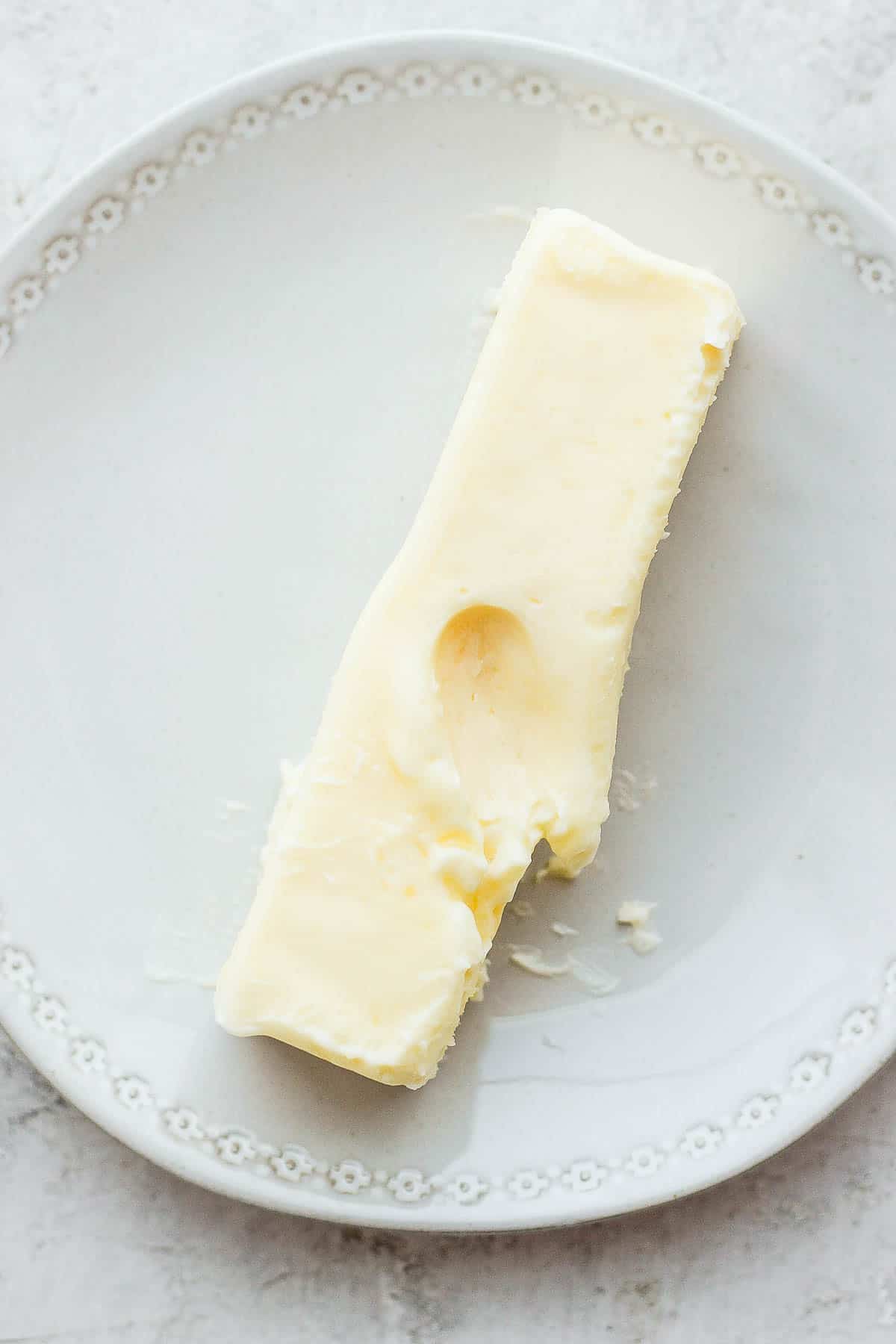
First, WHAT IS ROOM TEMPERATURE BUTTER?
Room temperature is a tricky term. In a drafty, old Vermont farmhouse, room temperature could be 64°F, while in an Arizona condo, it might be 78°F. So, for baking purposes, what is room-temperature butter?
- Your fridge is ideally 37° F. Expert bakers say that softened butter, aka ”room temperature butter” should be between 60°F to 68°F – after that it loses the properties that help it make lovely air pockets in baked goods.
- It is firmer than you think: room temperature butter should be bendable, but the stick will not squish apart in your hands, nor should it be greasy and oily.
- No liquid: There should be no pools of melted butter either inside (from the microwave) or outside.
WHY soften butter properly?
Getting your butter to the correct temperature is a Goldilocks thing. It has to be just right because, at different temperatures, butter reacts differently when combined with sugar and other baking ingredients.
- The recipe will not work: Baking is a precise art that relies on the specific chemical reaction of ingredients much more than say, making soup. So, directions need to be followed closely. If a recipe requires room temperature butter, use it to achieve the desired result.
- The texture will likely be different: When creamed with sugar, properly softened butter creates air pockets that helps create the rise in baked goods. However, melted butter does not do the same thing. It will make cookies chewier, and they will spread more on the baking sheet. Cakes will be tougher.
- Likewise, hard butter is more difficult to incorporate into the baking mixture. You may end up with butter chunks where you do not want them and potentially your cake will not rise because air has not been trapped in the butter bits.
HOW TO soften butter Four ways
Now that we’ve talked about why it’s important to soften your butter, let’s discuss some methods you can use to achieve the perfect consistency. Remember, room-temperature butter should be soft, but not greasy or melted.
How to Use The microwave To SOften Butter
- Put unwrapped butter on a plate in the microwave and cook for a total of 35 seconds, stopping and turning the butter ¼ turn every 10 seconds.
- Remove from the microwave and use as desired. This method softens butter quickly taking less than a minute.
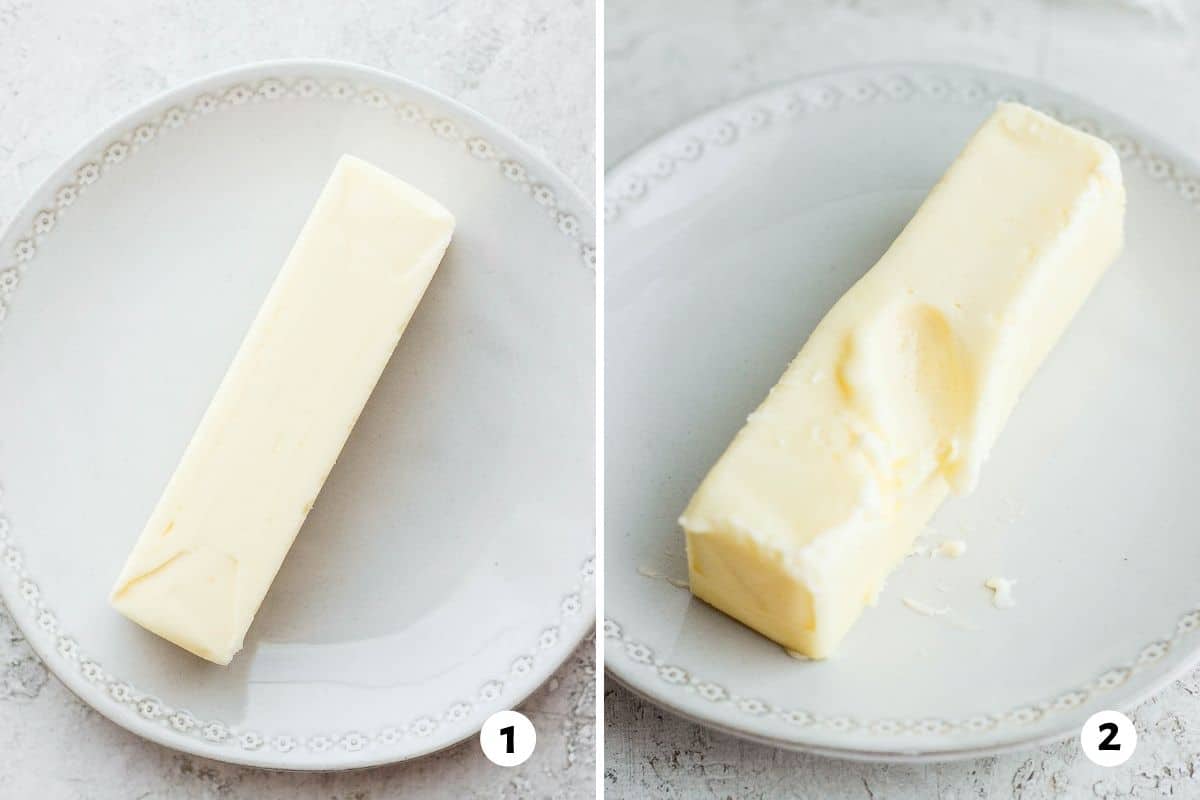
Countertop / Cubed
- Unwrap the butter. Cut length-wise and then dice into little cubes. Separate slightly to help them soften faster than a big stick.
- Allow to sit out on the counter for 30 minutes. Use as desired. This is the method I use most in my kitchen!
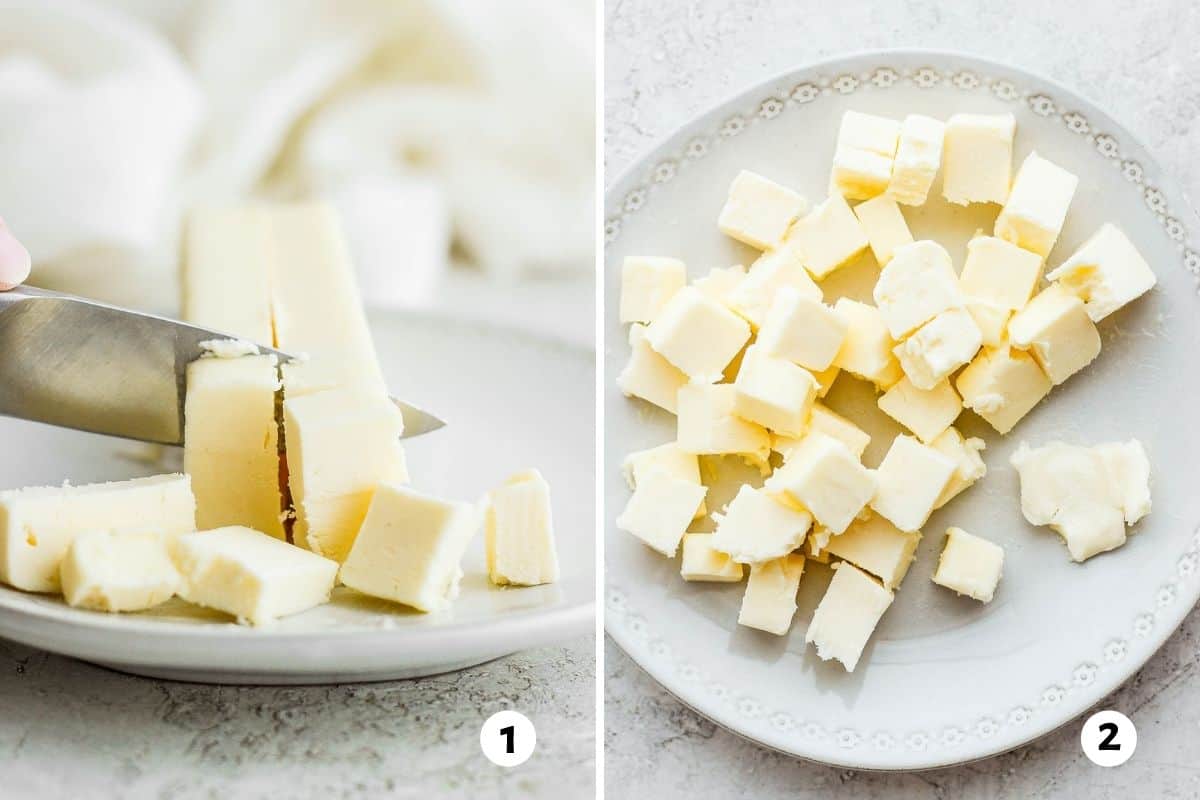
Steaming Cup
- Fill a tall, microwaveable glass with water. Heat for a minute. Carefully remove the glass from the microwave, dump out the water, and immediately place the glass over a stick of butter.
- Allow 5 minutes for the butter to soften under the glass. Leave out on the countertop uncovered for an additional 10 minutes to continue softening.
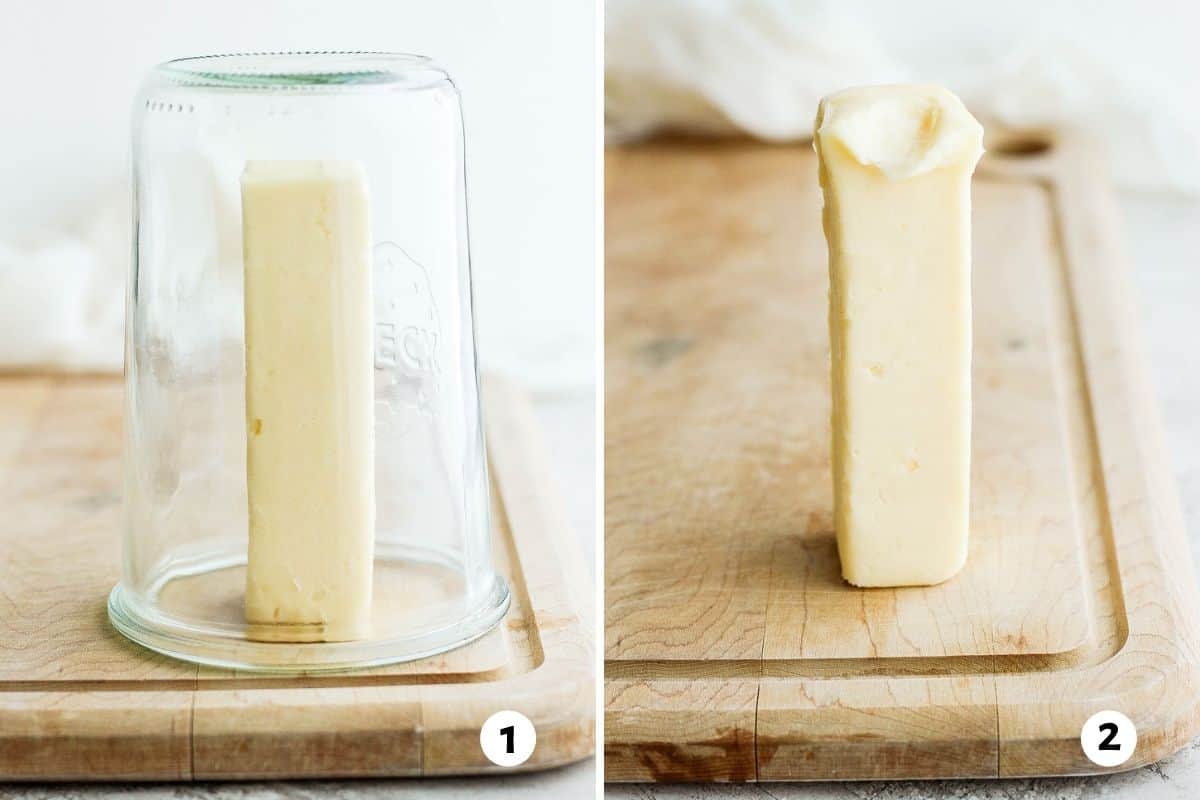
Countertop / Pounded
- Put unwrapped butter in a large ziplock bag or between two sheets of wax paper or plastic wrap.
- Take a solid wood rolling pin (not one with handles which could break) or other hard object and pound the butter until it is 1/2″ to 1/4″ thick. Allow to sit out continuing to soften for 10 minutes.
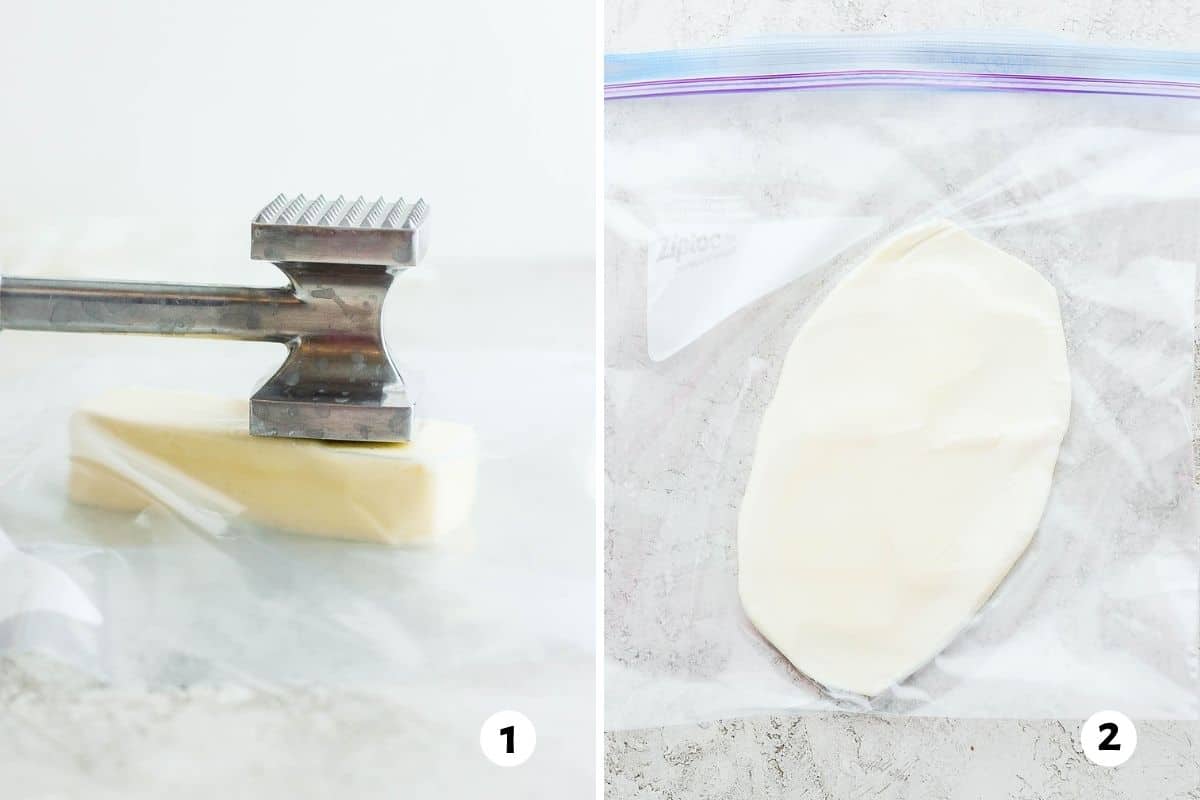
TIPS FOR softening butter
- Watch the butter. This is especially if you are using the microwave. It is easy to go past the desired result. For older, less adjustable microwaves, go only five seconds between checking and turning.
- Use your (non-digital) hot spots. If there is a particularly warm – but not too warm – place in your kitchen, say on top of your refrigerator or beside the stove, use that as a natural place to speed softening.
- Scale up. For the hot glass method, scale up to a bowl for larger amounts of butter. Place the bowl in the sink, fill with boiling water from a kettle, allow the bowl to warm, and then empty. Wearing oven mitts, carefully place the bowl over the butter.
- Take your butter’s temp: Baking expert Stella Parks (Brave Tart) says on Serious Eats that butter should be no hotter than 68°F, and she prefers hers around 60°F. If you have an instant read thermometer, break it out and check.
How to rescue melted butter
When the stick is oozing liquid, the butter is a no-go for creaming properly, but the whizzes at America’s Test Kitchen have a solution, which involves cooling the butter quickly.
- Do not put the butter back in the refrigerator.
- Instead, take a few ice cube and stir into the butter.
- The results: after less than a minute of stirring, the butter will cool to a softened stage – right below 70 degrees.
- Remove the cubes and use. The Test kitchen says the added water is negligible.
FREQUENTLY ASKED QUESTIONS
Butter is safe at room temperature for two days. So if you leave the butter out all night but never bake those cookies, just pop it back into the refrigerator.
Grating butter on a large-hole grater works on the same principle as cutting butter into chunks – smaller pieces defrost faster. It is best used with very cold or frozen butter. Sometimes it comes down to which would you rather wash, a knife or grater?
Salted butter contains more water than unsalted butter and will soften faster than unsalted. However, the vast majority of baking recipes call for unsalted because its higher fat content creates a better taste and allows the cook to control salinity.
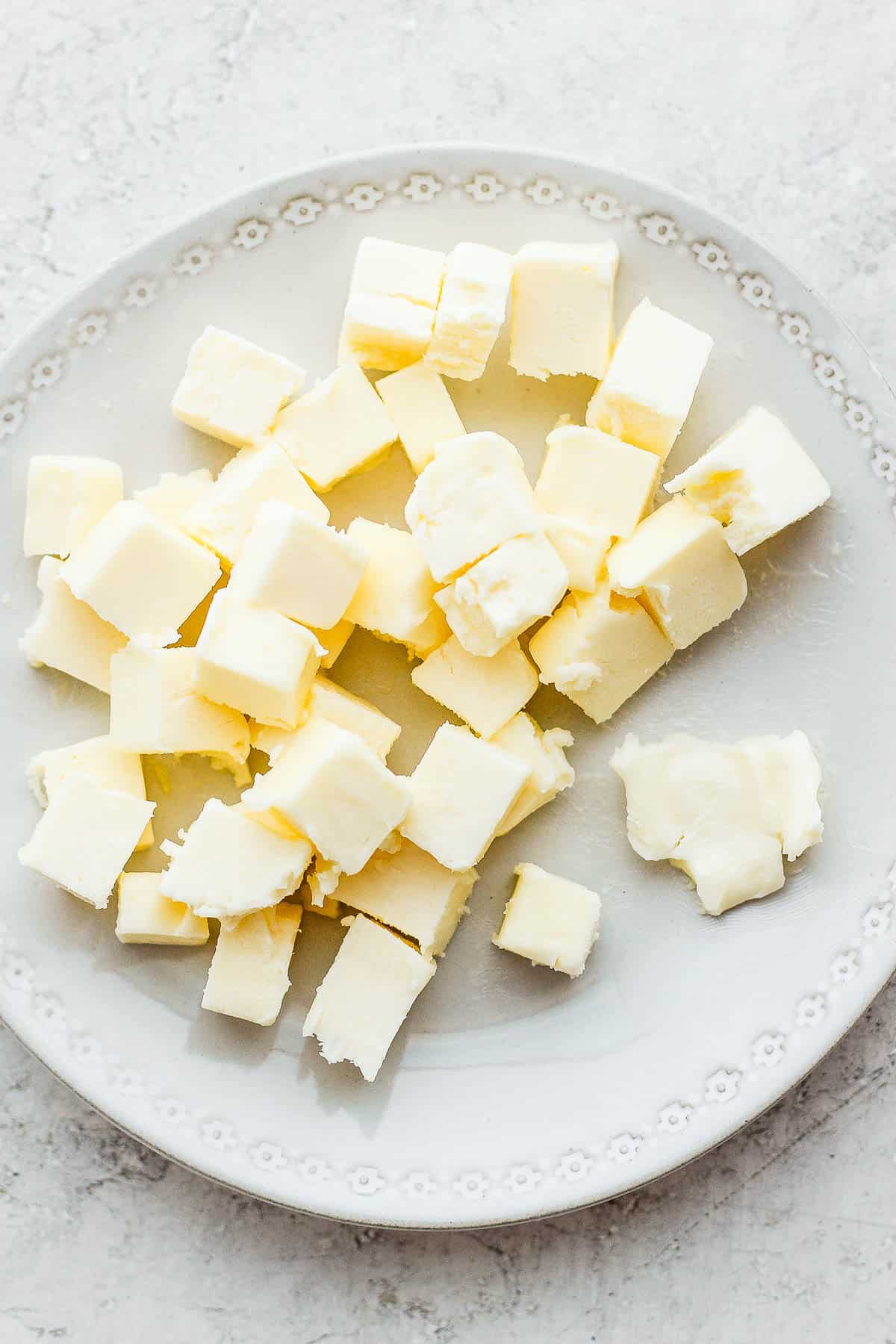
Understanding the best way to soften butter is a peek into the science of cooking and will make you a better baker.
RECIPES TO MAKE WITH SOFTENED BUTTER:
- Tahini Chocolate Chip Cookies
- Cranberry Lemon Pound Cake
- Cardamom Cookies
- Banana Chocolate Chip Cookies
- Date Cookies
- Cinnamon Coffee Cake
If you found this tutorial for How to Soften butter helpful, or if you try any recipe on Feel Good Foodie, then don’t forget to rate the recipe and leave a comment below! It helps others who are thinking of trying out this tutorial, and we would love to hear about your experience. And if you snapped some shots, share it on Instagram so we can repost on Stories!

How to Soften Butter (4 ways)
Ingredients
- 1 stick butter
Instructions
Microwave
- Place unwrapped butter in 200W microwave and set power level to 5 or 50%
- Cook for a total of 35 seconds, stopping and turning the butter ¼ turn every 10 seconds. Remove from the microwave and use as desired.
Countertop/Cubed
- Unwrap butter and cut into cubes. Allow to sit out for 30 minutes on the countertop before using.
Steaming Cup
- Place water in a microwave safe glass and heat it for about 1 minute. Pour the water out of the cup and place the cup over the unwrapped stick of butter.
- Allow 5 minutes to soften the butter and then leave the butter out on the countertop for 10 more minutes before using.
Countertop/Pounded
- Unwrap butter and place into a large ziploc bag or sandwich between two pieces of plastic wrap or wax paper.
- Using a solid wood rolling pin (not a rolling pin with handles as it could break) pound the butter until it is ½ to ¼ inch thick. Allow to sit out for 10 minutes on the countertop before using.
Nutrition
Nutrition information provided is an estimate. It will vary based on cooking method and specific ingredients used.
Photo Credit: Erin Jensen






Wow, I have been baking for YEARS and never realized this about butter! Thank you so much, I found this so enlightening! Sometimes I would get different results in my recipes and now realize it could have been because of the ‘meltiness’ or temperature of my butter. I will save this tutorial. Thanks Yumna!
I’m so happy you found this! Glad you found it helpful. You’re so welcome!